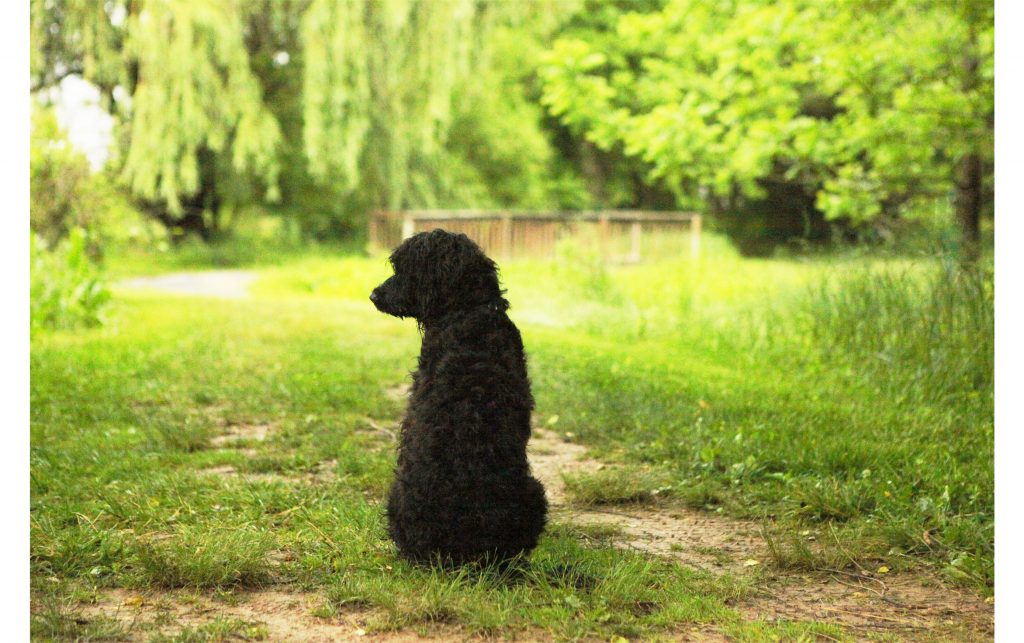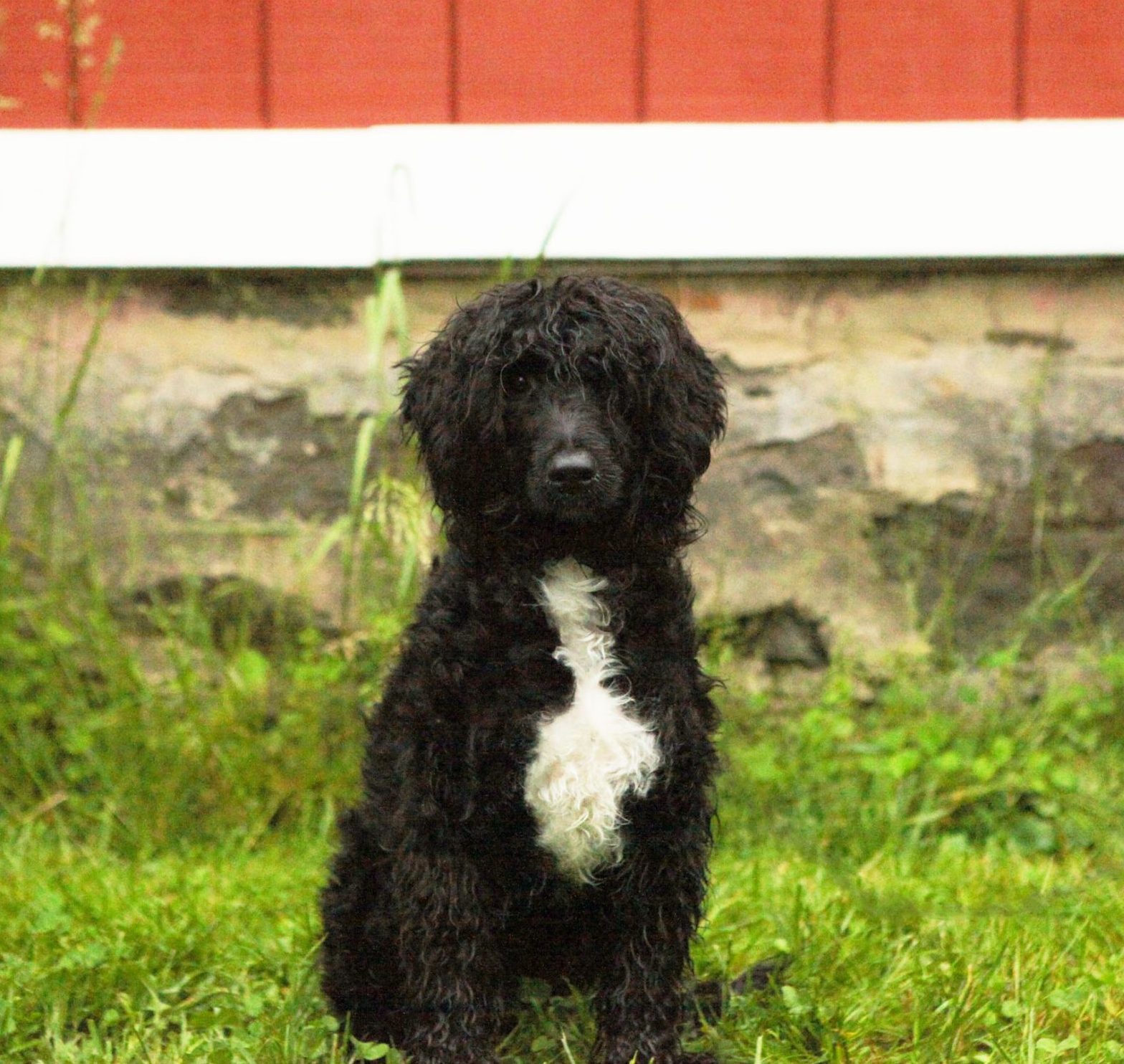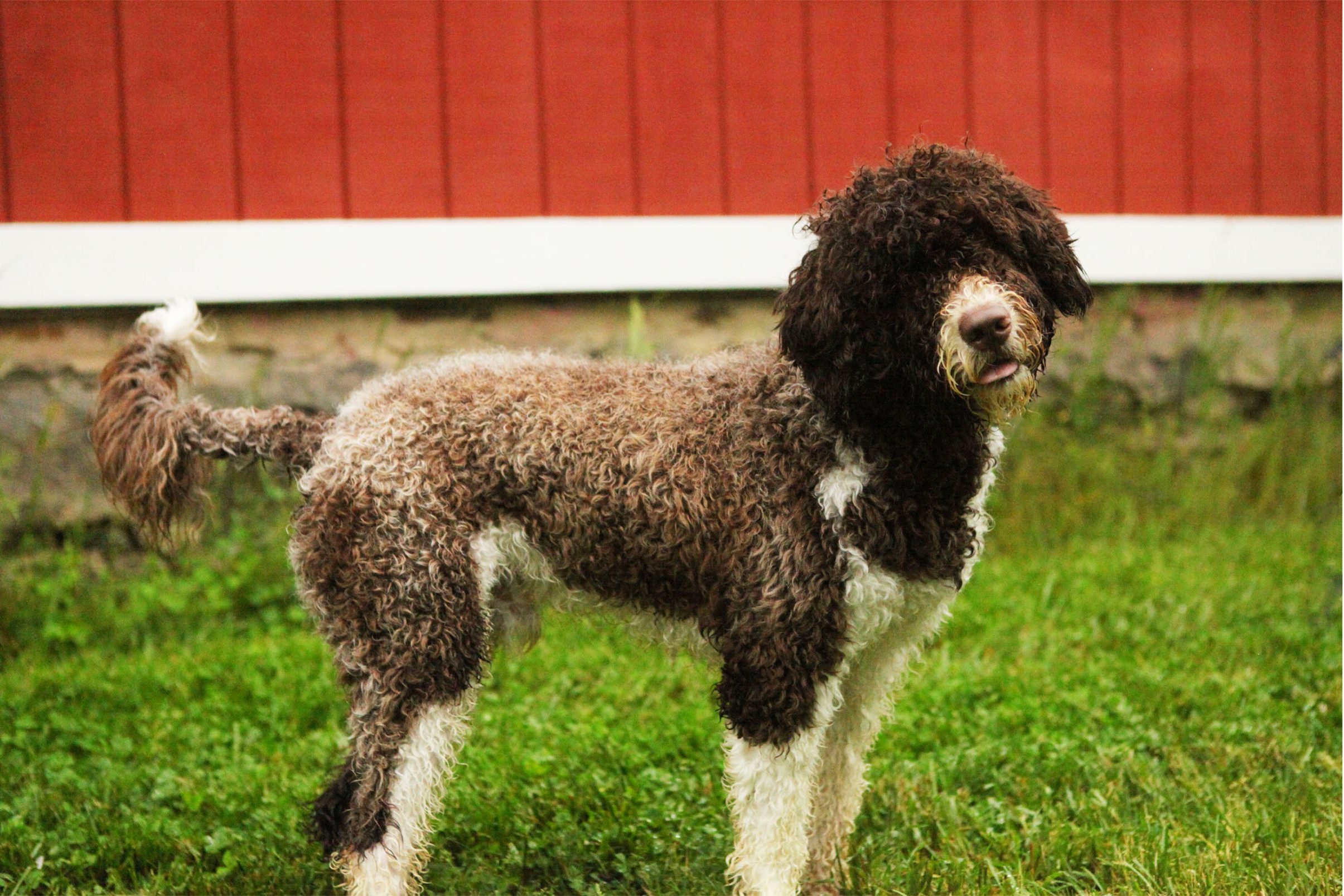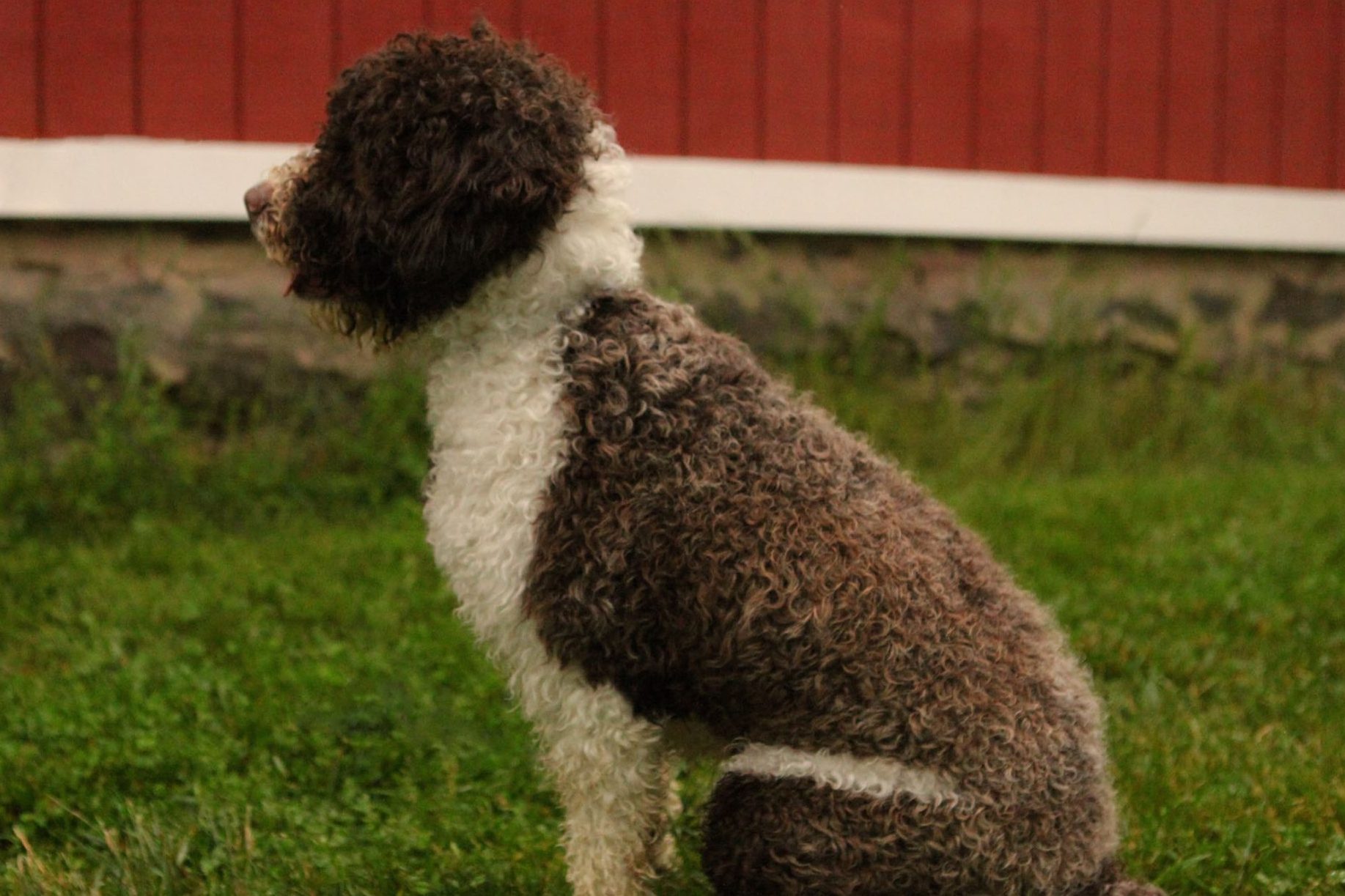
About the Portuguese Water Dog
Physical Appearance
Height: 17-23 inches
Weight: 40-65 pounds
Age: 10-15 years
Considered medium-sized working-class breed by the AKC


Coat Types and Colors
Portuguese Water Dogs have two main coat types: curly and wavy. Wavy dogs may vary in the amount of curls they have in their coats, and curly dogs may vary in how tight their curls are. The wavy gene is dominate, and therefore more common. The curly gene is recessive, and therefore less common.
PWDs have two coat colors: brown and black. Black is more common as its the dominate gene, and brown is recessive, making it more rare. PWDs that appear to have a white coat is usually attributed to their markings.
There are many different markings that make PWDs so beautiful and unique. Piebalds are the most recessive. These are dogs that have mostly white bodies with colored ears and a spot at the base of the tail. Parties are the next most recessive. These are dogs that are anywhere from 50% to 70% white. Solids are relatively common. These are dogs with 5% or less white. Irish markings are the most common. These are dogs with white on their muzzle, paws, chest, and tail. The amount of white may vary.
History
Portuguese Water Dogs originate from Portugal (obviously). They were bred to assist fishermen with a number of things – tasks like herding fish into the net, carrying messages between boats, and diving after lost objects. To help them with these tasks they have webbed feet and a strong tail to act as a rudder.
But with the invention of radios and motorized boats, PWDs were no longer needed by the fishermen, and the breed nearly went extinct.
Thankfully, a Portuguese businessman named Vasco Bensaude took an interest in the breed and saved the Portuguese Water Dog.

Temperament and Needs
The Portuguese Water Dog is a unique breed that requires many things to be kept happy. I will outline a few of them here, but remember, dogs are individuals and are not completely predictable.
01
Exercise
These are high-energy, adventurous dogs. Daily jogs or trips to the park for a game of fetch are among their favorite activities. But swimming is by far the best way to tire them out. I have never seen a dog light up the way a PWD lights up when they’re in the water. They will swim all day and sleep through the next.
02
Training
As much as these dogs are athletes, they are geniuses. They love to figure things out. Training can put this power to good use, but if not they can use it against you. Obedience training is a great tool that is often necessary for this breed (more about training in Resources). But you should also train at home. Try teaching them fun games that make them feel like they’re being helpful.
03
Human Interaction
These dogs cannot live without humans. They are extremely loyal companion dogs, some even becoming territorial. They long to be a member of the family and look to be included in everything. For these reasons, they tend to have separation anxiety and are not dogs that can be left in a cage all day. If you have to leave the dog crated for a few hours, make sure you have someone who can let them out and play with them.
04
Nutrition
Busybodies need to eat well. These dogs are people-oriented, not food-oriented, so its easy for them to fall behind and not eat enough. We highly suggest buying Ruff Greens, a nutritional supplement you can add to your dog’s food to liven it up.
05
Grooming
These dogs have beautiful coats. Trips to the groomer twice a month will be necessary for a PWD. Or you can brush them regularly at home. Either is fine, just watch out for mats!
